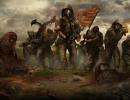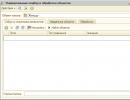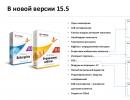Schulte accent table. Preventive work of a psychologist at school
To train speed reading skills, many experts recommend performing special exercises with Schulte tables. The technique of performing these exercises is aimed at improving peripheral vision, increasing the amount of visible text, and therefore speeding up reading. In this article you will find detailed description exercise techniques with Schulte tables. In addition, you can take tests using these tables online and, if you wish, download Schulte tables of various levels of complexity for free.
What it is? The Schulte table is a table in which certain information (most often sequential numbers) is randomly placed in the cells. The most common type of interpretation of the Schulte table (or Shultz tables) is a square table with 5 columns and 5 rows, in which numbers from 1 to 25 are randomly placed. Such a table is shown in the picture below:
The essence of the work with Schulte tables is to quickly sequentially find all numbers or other objects located in the table. Moreover, the emphasis is placed precisely on the speed of finding, which can be increased by special techniques for working with these tables.
The effect of the exercise. Typically, Shultz tables are used to develop the pace of information perception, and also as a test to study the current state of this pace. Constant work with Schulte tables helps expand your peripheral vision. A wide field of view reduces the time it takes to search for informational parts of the text. Also, by working with such tables, the speed of visual search movements increases, which is an important component of fast reading skills.
In addition, Schulte tables are often used in Neuro-Linguistic Programming (NLP) training to obtain the so-called state of high productivity, which is achieved by switching consciousness from critical perception to a certain apathy and the ability to effectively perform logical and sequential operations. In principle, this effect is also important for speed reading. Therefore, we can say that working with Schulte tables has a double effect on increasing reading speed.
Method of performing the exercise
In order to effectively increase your reading speed, you need to look for numbers by silently counting, that is, silently, in ascending order from 1 to 25. For information on how to read without speaking to yourself (without articulation), see this lesson. The found numbers are recorded only with a glance. However, this search has its own peculiarity. In order to perform the exercise correctly, and therefore find all the numbers faster, by training your peripheral vision, you need to focus on the central cell of the table so that you can see the entire table.
The best training of visual speed reading skills when working with Schulte tables is achieved with the maximum absence of horizontal and vertical eye movements. To do this, it is necessary to maintain the correct distance from the eyes to the table. The further away the table is, the more convenient it is to look at all its cells at once. The optimal distance to the table should correspond to a comfortable distance to a book or monitor when reading. Usually this is 40-50 centimeters, but you don’t need to move your eyes too far, only if it is difficult for you to see the entire table.

Improper execution of the exercise
with Schulte table

Correct execution of the exercise
with Schulte table
Achieving the desired effect. When working with Schulte tables, it is important to understand what exactly you are training - your visual skills. Therefore, the main thing is not the desire to complete each table as soon as possible, but the correct execution of the exercise, that is, adherence to the methodology described above. At first, you may have some difficulties doing the exercise, but with each subsequent table you will find the numbers faster and faster. Eventually, you will realize that you can now find numbers much faster than if you were just looking for them with normal eye movements. This is the desired effect of the exercise method with Schulte tables.
Good peripheral vision, as well as visual search skills, can be achieved not only with the correct execution of number searches, but also with a constant, systematic training program. Therefore, it is important to work with Schulte tables at least 3-4 times a week for 20-30 minutes for 2-3 weeks. If your eyes start to get tired during class, it is better to take a short break or repeat the exercise the next day.
Practice with Schulte tables
To train your peripheral vision, as well as the ability to quickly find information in text, you can download Schulte tables of various levels of complexity for free.
First level contains Schulte tables for children and beginners in speed reading. These tables have dimensions of 3x3 and 5x3. Such tables are available on 4brain. If these tables are easy for you, it's time to move to the second level.
Second level Schulte tables contain traditional tables with twenty-five 5x5 cells. In addition, you can use online program for exercises with standard Schulte tables, which is given below. Download tables of the second level of complexity.
Third level contains special Schulte tables for those who found the previous levels easy. Firstly, they have multi-colored matrices, including red-black tables (Gorbov’s Method). Secondly, large Schulte tables are presented here.
Such tables allow you to more effectively train peripheral vision, especially when quickly reading from websites, magazines - sources not only with textual, but also graphic information.
My site is called one of the 6 steps to Eternal Youth "Fitness for the brain"- regular training to develop and restore intelligence and memory. Of course I would like it in a tablet. Like I threw it in my mouth, washed it down with clean spring water and - voila! You practically Spinoza did not receive the Nobel Prize for your discoveries only due to an oversight or due to the machinations of competitors. Who also found out about the pills.
But, unfortunately or fortunately, when God invented man, he created our body balanced and harmonious. And if we try to suddenly overload ourselves in one place, it turns off the system in another. If suddenly, in the midst of complete health, a pill for Spinoza invented by bad people redirects all the resources of our body to the explosive growth of intelligence and memory, then the built-in fuses will limit the supply of resources to the reproductive system, for example. Like, why do you need this if you’re suddenly so smart?
Hence the conclusion: Any changes and improvements in your own body must be made gradually and, preferably, comprehensively
Same with brains. Calm, regular exercise and training of memory and intelligence will give much more significant results than any pill. And without side effects such as diarrhea and impotence.
Main and peripheral vision.
The flow of information into our brain is carried out largely through vision, which is divided into two types - main and peripheral
Primary vision a person perceives information in front of his eyes. This is what vision perceives clearly, in all details and details. Here you are, now, reading these lines, and you clearly see a certain word in front of you. This is our main vision.
And, all those words that are before and after, above or below are perceived a little differently, less clearly. The surrounding environment, monitor, table, furniture in the room are also less clearly perceived. This ability of our vision has been called peripheral vision.
And it turns out to be quite an interesting relationship. What we see clearly takes up much less space in the overall picture compared to a blurry image. This means that the bulk of information comes to us through peripheral vision. And, if we want to increase the amount of perception, we need to learn to work on this very lateral vision.
And one of the basic exercises for training lateral vision is working with Schulte tables.
Schulte tables

These are ordinary tables with numbers from 1 to 25. The task of the exercise is simple - you need to find all the numbers from one to twenty-five. It seems simple and elementary, you don’t have to count anything or strain yourself. But the essence of this exercise is that you need to learn how to do this while looking exactly at the center of the table. And, if possible, make as little eye movements as possible.

That's the whole trick. And to control, you need to measure the time during which you found all the numbers.
If you have found all the numbers in 20-30 seconds, this is a good result, but it makes sense to practice more.
If your result about a minute, or more, then this is the very case when you need to work more closely on your ability to perceive information and the ability to process it. You will see for yourself that after a few days of training, the speed and quality of perception will begin to improve.
The desired result is 10 Seconds. This is the milestone that clearly shows that your peripheral vision is in good, working shape.
The effect of working with Schulte tables
It would seem that the simplest task is to look for numbers in the table. It’s not easy to solve equations with three unknowns. Yeah, the simplest one 
It is quite difficult to keep your gaze on the central square. The eyes automatically move in different directions to find the desired number.
This is the main difficulty, and the main value of this exercise.
It is not the eyes that should guide our consciousness, but the consciousness should be able to influence the work of the eyes
If you have already decided to learn to control your head, then there should be one “command post” - your consciousness.
So, the main difficulty is the ability to keep your gaze on the central cell. The habit of moving our eyes chaotically is so firmly established in our heads that sometimes it begins to seem like there is no number at all. And to make sure of this, you “necessarily” need to look at all the cells with a direct glance.
This is a kind of trick, a check for lice. This issue is resolved quite quickly - there are 25 cells and 25 numbers, so everything is in place, no doubt.
And one moment.
When you learn to look at all the cells at once, your gaze becomes defocus. It’s one thing to look at an object and clearly see part of it, and a completely different thing to look as if through the object. See him and everything around him.
Defocusing takes the perception of information to a completely different level. The number increases significantly. With the right approach, you can learn to perceive an entire page of text in about 2 - 3 seconds. Information seems to flow into our heads.
But this is a higher, but not at all unattainable skill, if there is a desire. In about a year or a year and a half of training, you can accustom your consciousness to this regime. But, I repeat, this is for those who decided to work on this issue. We are still mastering ordinary mental gymnastics.
The quality of perception changes, and the quality of assimilation automatically changes. These are interconnected processes. And this is a direct road to good memory, good memorization.
How to work with Schulte tables
- It is advisable to do this twice a day, for about ten minutes. You shouldn’t overexert yourself, it won’t give the right dynamics.
- Let's sit back and relax. It is advisable to turn on either pleasant music or a good, correct mood.
- We direct our gaze to the center of the table, and, as if fixing this position, we give ourselves the command to make minimal movements.
- We turn on the stopwatch and begin searching for numbers from 1 to 25. The eyes should make minimal movements. All work takes place in the blurred spectrum of vision.
- There is no need to make a cult out of this, and it is imperative, right now, no matter what, to achieve the maximum result. Everything should happen gradually. After working out for three weeks, achieving a certain stable result, take a break. In a week or two, try again.
Gradually, you will see the effect yourself. You will see for yourself how much your ability to perceive information, memory, and thinking will improve.
When you need to come up with something, create something, write something, work with tables, and the process will go smoother. high level concentration, higher creative level.
You will create the right training regimen for yourself. And don’t forget that this is just a basic exercise, a kind of gymnastics, exercise for the head, maintaining good, working shape.
Schulte tables online
There are enough services on the Internet where you can train with Schulte tables. With timers and difficulty selection. I'll give you a few links. You can find your own.
Choose what you like best and go ahead. Remember that the main thing is regularity. It makes sense to keep a results diary and monitor your own progress. Maybe the day will come when you will be able to pass such a table

************************************************************************************************
Today I wanted to tell you about one very interesting test - Schulte tables, which quickly checks the level of concentration, distribution and switching of attention. With its help, you can not only evaluate your attention, but also develop it well.
Before moving directly to diagnosing attention, I’ll give a little theory:
What is attention? This is a person’s ability to direct his consciousness to certain objects that have some significance for him, as well as his ability to focus on something specific.
Attention is closely related to other mental processes (memory, thinking, perception), including human motor reactions. In this regard, there is a distinction different types attention:
- Touch attention- caused by focusing on an object with the help of our senses.
- Motor attention- caused by concentration on movements.
- Intelligent attention- caused by focusing on our thoughts, experienced feelings, memories.
With the help of attention, we can easily select from the general flow of information something specific that is necessary for us at a given moment in time, filtering out what is unnecessary. Attention is held only when the desired goal is fully achieved, then it weakens and switches for something else.
Attention is highly dependent on our mental state and general health. It is obvious that it is extremely difficult for a tired, sick or anxious person to maintain his attention and calmly concentrate on current affairs.
Besides, attention is not the same in children and adults.
In preschoolers, unlike adults, involuntary attention, that is, it is connected with the present and depends on the interest of children: no interest - no attention.
- Pre-school age (up to 3 years). Infants are attracted to light, sound and mechanical stimuli from the outside world, which are closely related to their general care (bathing, feeding, dressing, etc.). For example, seeing his mother and feeling how she takes him in her arms to feed him, the baby fixes his gaze on her. Later he begins to smile and make joyful sounds as soon as he sees or hears her affectionate voice.
- Junior preschool age (3-4 years). With age involuntary attention begins to develop in its diversity when the baby becomes more and more familiar with the world around him. Attention arises and is maintained as the child shows interest in the toy, to parents, to other children. Manipulations with toys are gradually replaced by story-based games; the child can play for about 15-20 minutes on his own if he is VERY interested.
- Middle preschool age (4-5 years). Involuntary attention becomes more diverse and covers many aspects of the child’s life (home, kindergarten, relationships with parents, grandparents, peers and other strangers). The more often a child is in society, the more opportunity he has to develop his involuntary attention.
- IN senior preschool age (5-7 years) is gradually being formed voluntary attention - the child’s ability to carry out some task regardless of interest, on the basis of a conscious volitional effort: he sets a goal for himself and strives to fulfill it.
By age 7 voluntary attention should already be formed. This is one of the conditions for.
Now let's check ourselves and our child. There is a wonderful technique: Schulte tables. She will help us check level of development of voluntary attention. Children aged 7 years and older can take part in testing only if they already know numbers and can count from 1 to 25 fluently.
How to perform the test?
So what are they Schulte tables? Below you see 5 tables with randomly scattered numbers. The task is to find them in order from 1 to 25 as quickly as possible. Children can point to the numbers with their finger; adults just need to run their eyes over them.
To make it easier and more convenient, you can for yourself (in PDF format, size 387.7 KB), print them on a printer and cut out each table separately.
Interpretation of results
Take a stopwatch and time the time it takes to complete each table. Having completed one and quickly noted down the time, you move on to the next and so on until the fifth table. It will be better if someone marks the time while you complete the entire test without any distractions.
Then build fatigue curve, which will show how concentration and stability of attention changes over time.
It is also interesting to calculate work efficiency (EF), degree of workability (VR) and mental stability (PU) using the following formulas:
ER = (T 1 + T 2 + T 3 + T 4 + T 5) / 5, Where
T i– time of working with the i-th table. i is the ordinal number of the table (1,2,3,4,5)
Average standards for one table: 7-9 years - 1 min 10 sec. Adults - 40 sec.
Degree of workability calculated like this:
BP= T 1 / ER
If your result is less than 1.0, your workability is good. The higher this number, the more time you need to prepare for a specific case.
Mental Stability or endurance is defined as follows:
PU= T 4 / ER
If you get a number less than 1.0, your endurance is good. The higher this number, the less endurance you have to complete certain tasks.
Help your child quickly adapt to the school environment! From an early age, teach him to easily and naturally train his visual memory, while eliminating mistakes in writing or counting. Using Schulte tables, you will achieve the desired result with little time and money.
Training visual memory
A small child is like plasticine, and what you mold from it determines who he becomes. One of the useful and required characteristics development is memory. Knowing this, loving parents teach it to their children from an early age. Some use memorization of poetry, others practice tongue twisters and proverbs. However, these methods, of course, are aimed at improving memory abilities and speech development, but do not have any effect on visual memory. Meanwhile, one should not forget about its existence.
According to scientists, it is precisely this that helps the child to master writing and reading faster and more effectively. has a targeted effect specifically on memorizing signs, in other words, the child will make fewer mistakes when writing, will easily and quickly learn to add and multiply, and subsequently it will be easier for him to perceive basic mathematical formulas. But for the future, now let’s talk in more detail about how the Schulte table for children works.
Preparing a child for school using the Schulte table
When going to school, a child must be prepared for the fact that many complex and equivalent tasks fall on him at once. He must not only adapt to a diverse group of children, but also learn to read, write and count. The child's psyche is very vulnerable and overly susceptible to criticism, so the task of parents is to qualitatively prepare the child for the new stage of his life. After all, it is very disappointing for a small schoolchild when he tries so hard to write words or numbers correctly, but mistakes are found in them.

The situation can be corrected by practice with memory training. By systematically performing the exercises, you can avoid a significant number of mistakes or say goodbye to them altogether. It all depends on your patience, parents, and, of course, on the desire to teach your child to remember information not only auditorily, but also visually.
Let's take a closer look at the Schulte tables. The method of working with them is aimed at increasing the possible field of vision of your child. According to experts, one of the reasons for the low rate is the small size of this field. But it can be increased with the help of special games and exercises. In an easy and relaxed manner, parents will help the child cope with the problem. The Schulte Tables program involves classes with cards that you can purchase or make yourself.
Making the manual yourself

To make a Schulte table at home, you will need cardboard (a sheet of paper) and a marker (felt-tip pen) with which you will write the numbers. By drawing the base into several squares, you create a training task. The level of difficulty depends on the age and abilities of your child. Since there can be a huge number of options, children do not get bored with games. Having mastered the most simple diagram, you can always move on to a more complex task.
The first card can consist of only 16 cells, and in subsequent ones you need to gradually increase the number (the more cells, the more difficult the task). On cardboard we write numbers from one to 25 in random order. For efficient work You should have several of these plates with different numbers at your disposal. It is worth noting: since Schulte tables are a universal simulator that is necessary for studying, adults can also actively use them, but more on that later.
Various tasks - interesting workouts
By coming up with various tasks and using the indicated tables, you can diversify the exercises, turning training into an eternal game. Children really like it, and they don’t get so tired while playing. And so that interest does not fade away, parents or educators should periodically change the tables and stimulate the desire to engage in rewards or competitions among children.
An example of visual memory training using the Schulte table

Having a card with numbers, you need to ask the child to name and show all the available numbers from 1 to 25 (or up to 16, depending on what table you have in your hands). Then it is advisable to announce the countdown. According to the recommendations, students in grades 1-2 not only show all the numbers, but also pronounce them out loud, while older children can limit themselves to just pointing.
Afterwards, you can practice calling only even or odd numbers. You can make the task a little more complicated by working on the table in pairs. For example, at the same time, a child names numbers in ascending order, and a mother or brother lists odd numbers. The competitive moment allows the child to learn to concentrate his attention on a specific task without being distracted by interference. Regular training not only strengthens visual memory, but also perfectly develops the child’s attention and even perseverance.
Schulte table test

Scientists have unraveled the secret to the effectiveness of tables. The results of research experiments indicate that Schulte tables have a beneficial effect on human brain activity. Scientists specializing in the field of functional neuroimaging have determined that the effect is due to a noticeable rush of blood to the areas of the frontal lobes of the cerebral cortex when solving a new problem. However, a repeated attempt to study the same picture significantly reduced the intensity of blood flow.
In other words, the intensity of blood supply depended on the complexity and nature of the Schulte table. By offering the brain a solution to new problems, we not only stimulate its work, but also improve its activity, increasing memory capacity and enhancing concentration. Schulte's black and red tables are especially effective for memory training. This is a modified material. At what plan? The numbers are no longer 25, but 49. Half are red, half are black. The child names the numbers in turn: first one color, then another. When listing reds, he uses a direct count (from 1 to 25), and when listing blacks, he uses a reverse count (from 24 to 1). Since the task is quite complex, it is intended for children of high school age (and adults).
The most effective training for our intelligence
The question arises: “Why are these particular puzzles effective?” Training stimulates the movement of the entire volume of blood flow to those areas of the cortex that are responsible for activating the intellect in the decision-making process. In addition, it was noted that the main part of the brain is practically not distracted, as is usually observed during arithmetic calculations, solving crossword puzzles or cramming poems.

By finding solutions to logical problems, we activate mathematical thinking and use memory, remembering this or that formula. Other parts of our brain are responsible for these abilities. Almost the same thing happens when solving crossword puzzles. Again, it is necessary to strain additional areas of the cerebral cortex that are responsible for associative thinking and memories. In other words, part of the intensity of the blood flow is again lost.
The total volume of blood is distributed to other areas, while reducing the amount of blood entering the frontal lobes. The same thing is observed when memorizing poetry. By remembering or memorizing phrases, we activate memory, initiating areas responsible for recalling and storing information. As a result, the intensity of blood flow again decreases.
Schulte tables - the best option for improving memory
A completely different scheme is carried out when training using the Schulte table. There is no need to remember something or perform mathematical operations (multiply, add, subtract, divide), look for suitable associations, checking information with available data. You don't have to put in much extra effort during the workout.
Schulte matrices - squares with numbers from 1 to 25 randomly placed in cells (the most popular table size is 5x5) have become widely used to improve attention, concentration and expand peripheral perception.
Types of Schulte tables
Based on size and level of complexity, they are divided into:
- simple Schulte tables - 3x3, 4x4;
- average level - 5x5;
- complex - 6x6, 7x7, etc.
The classic version is black and white (black numbers on a white background). Schulte's color tables and red-black ones are considered more complex, which train concentration and selectivity of attention even better.
In addition to the digital version of the Schulte tables, there is also a letter version, which is completed in alphabetical order.
Schulte tables are most popular in 2 areas:
- A test to determine the amount of attention (used to diagnose the level of attention in primary schoolchildren and others). To diagnose switching attention (dynamic attention), red-black Schulte-Gorbov tables are used. Successful passing of the test according to the Gorbov-Schulte tables is a mandatory condition for admission to driving an electric train for the driver and assistant driver.
- An effective exercise for developing peripheral vision is the most important stage in mastering the technique of speed reading. Regular training using Schulte tables expands the scope of vision, that is, a much larger space with information comes into view, in our case it is text. Due to the increase in the field of visual coverage and the development of the speed of parallel recognition of symbols, the reading speed also increases significantly.
Exercises using Schulte tables have no age restrictions. For both adults and especially children, the basic value of training with Schulte tables is the development of attention.
If for adults the main motivation is to master the technique of speed reading, then for children Schulte tables are an excellent exercise for:
- developing the ability to concentrate;
- development of short-term visual memory;
- expansion of narrow vision coverage;
- improving reading skills and perception of text information.
How to use Schulte tables correctly?
To get the most out of your training, we recommend following the following instructions when performing exercises:






